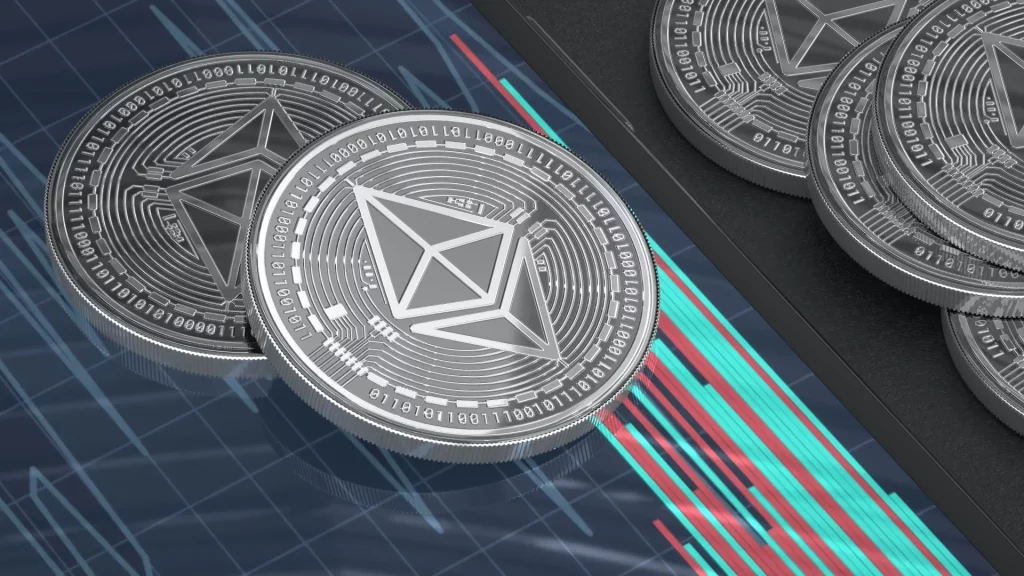
How Ethereum is changing in 2022 & what the impact will be
By the end of 2022, Ethereum is expected to experience the biggest change in its seven-year history. Ethereum’s consensus method, described as The Merge, is changing from Proof of Work to Proof of Stake. This not only makes Ethereum more environmentally friendly, but also drastically reduces ETH issuance and sets the stage for huge improvements in scalability.
Since Ethereum launched in July 2015, it has used the same consensus method as Bitcoin, called Proof of Work. Everything changes when the merger merges a separate chain – the Beacon Chain – which has been serving as a Proof of Stake since December 2000 – with the main Ethereum blockchain. Since then, Proof of Stake has been how Ethereum has achieved consensus.
To understand the significance of Ethereum’s move to Proof of Stake as a “new engine,” you must first understand blockchain consensus methods.
What is the consensus method?
The consensus method is how a blockchain, a decentralized network of independent computers, reaches consensus on the correctness of new data in a shared ledger.
In the case of Bitcoin, a new type of monetary system, the distributed ledger is updated to reflect recent unused transactions and in UTXOs (Unspent Transactions) the number of bitcoins corresponding to the account balance.
Ethereum serves as a calculator – described as the world’s computer – and monetary system, Ether (ETH). Therefore, a consensus on the state of balance calculations of digital applications (dApps) and accounts containing Ethereum (performed via smart contracts) is required. Both are stored in something called the Ethereum Virtual Machine (EVM).
Proof of Work is named after network participants, known as Miners, who must prove that they have done enough work to add new blocks of data to a ledger described as a distributed blockchain.
The required task is to continuously run a specific software algorithm that consumes electricity in the process of solving a mathematical puzzle. The winner receives a reward in bitcoin or ether and the right to publish a new block.
Proof of Work electricity consumption produces what economists call a negative externality; Bitcoin and Ethereum are gaining security, but the world has to deal with carbon dioxide emissions.
Proof-of-work is the only way the supply of bitcoin and ether grows, so since scarcity is one of the fundamental properties that give value to money, consensus methods dictate the coin supply schedule (the speed with which new coins are added) leading to fa in terms of price.
In addition to the block reward, miners receive payments for transactions added to new blocks. Competition for limited block space drives up costs, so the consensus method plays a key role in encouraging miner participation and determining trading costs.
Proof of Work encourages good behavior because there is no point in wasting expensive energy trying to insert fake transactions into new blocks that will be rejected by the rest of the network.
The bad guys can only be successful by controlling over 51% of the mining power known as the Hashrate to add new blocks of false information. Therefore, it is important that the barrier to entry for miners is low to avoid collusion.
This barrier to entry involves downloading and archiving the entire blockchain and using software that contains the consensus rules. The consensus method is therefore essential for the security of the entire system.
The Consensus method adds new transaction blocks of a fixed size and at a fixed rate – for Ethereum this is limited to around 15 transactions per second. This determines the scalability of the system, because if the speed and size are fixed and the demand for transactions increases, the transaction costs will only increase.
So changing the Ethereum consensus mechanism is a big deal because:
- it has an effect on scarcity, which affects price.
- Change the structure of incentives for confirming transactions.
- This may affect your transaction processing fees.
- It is essential for the security of the whole system.
- It affects the scalability of the system.
- Change the effects on the environment
We can now look at the impact Ethereum’s plan to move to Proof of Stake will have on each point.
Compounding – Emission and scarcity
One of the major criticisms of Ethereum in its current form is that, unlike Bitcoin, it has no supply limits. At the time of writing, Ethereum’s annual issuance rate – the rate at which new ETH is created through block rewards – is just under 4%.
However, real inflation is close to 0.5% due to the impact of EIP 1559. The change to how Ethereum works went into effect in August 2021 and part of the transaction fees will be refunded. After the merger, with premiums burned, premiums reduced, and so much ETH locked up, Ethereum inflation should be neutral at 0%.
This is one of the biggest arguments in favor of cryptocurrency over fiat money: it is a hedge against inflation because the supply is fixed and scheduled. Ethereum proponents see it as a transition to ultrasonic cash.
This offers a huge advantage to those who already own Ethereum, knowing that the value of their money will not go down. It also encourages more users to invest money as the net benefit of fees is higher.
The Merge – modification of incentives
The move to Proof of Stake completely changes Ethereum’s incentive structure for the essential work of the Validator: storing data, processing transactions, and adding new blocks. Instead of earning rewards in proportion to energy invested, they are distributed probabilistically based on the share of total ETH invested.
You need a minimum of 32 ETH to act as a standalone validator, which most people can’t do, but you can join a staking pool instead. By joining a staking pool, you delegate your ETH to a validator and earn proportional rewards for securing the network through proxies.
Ethereum staking has been active since December 2020, with nearly 13 million ETH locked up at the time of writing, worth over $13 billion. Staking yielded a passive return of around 4%, but while some claim this will increase to 10-15% after staking, the official Ethereum website estimates the APY will grow at a more modest 50%.
Distributed funds cannot be withdrawn at this time, which will continue even after the Merger, protecting the value of Ethereum by preventing Stakers from immediately selling prizes. This means that at the current level of staking, around 11% of Ethereum supply is tied up until the Shanghai update, which is expected to happen 6-12 months after the merger.
